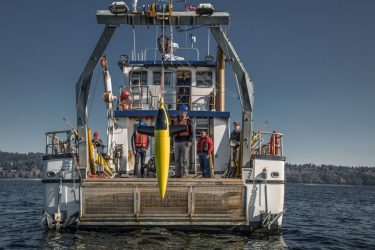
One of the biggest unknowns for the future of Earth’s climate is Antarctica, where the West Antarctic Ice Sheet holds so much ice that, if it collapsed, it could bring several feet of rising seas.
A new partnership between the University of Washington’s College of the Environment, the UW Applied Physics Laboratory and Paul G. Allen Philanthropies will use a robotic network to observe the conditions beneath a floating Antarctic ice shelf. Observations in the water-filled caves under ice shelves could help explain how warmer seawater interacts with the glacier’s underbelly.
“This is a high-risk, proof-of-concept test of using robotic technology in a very risky marine environment,” said Craig Lee, a UW professor of oceanography and senior principal oceanographer at the UW Applied Physics Laboratory.
See also:
- Scientific American: “Ice-diving drones embark on risky Antarctic mission“
- Seattle Times: “UW’s robotic fleet will probe under Antarctic ice shelves for clues to future sea-level rise“
- GeekWire: “Scientists get robots ready to study Antarctic ice shelves from below, with $2M boost from Paul Allen“
- Paul G. Allen Foundation: “Undersea drones dive below Antarctica’s ice”

